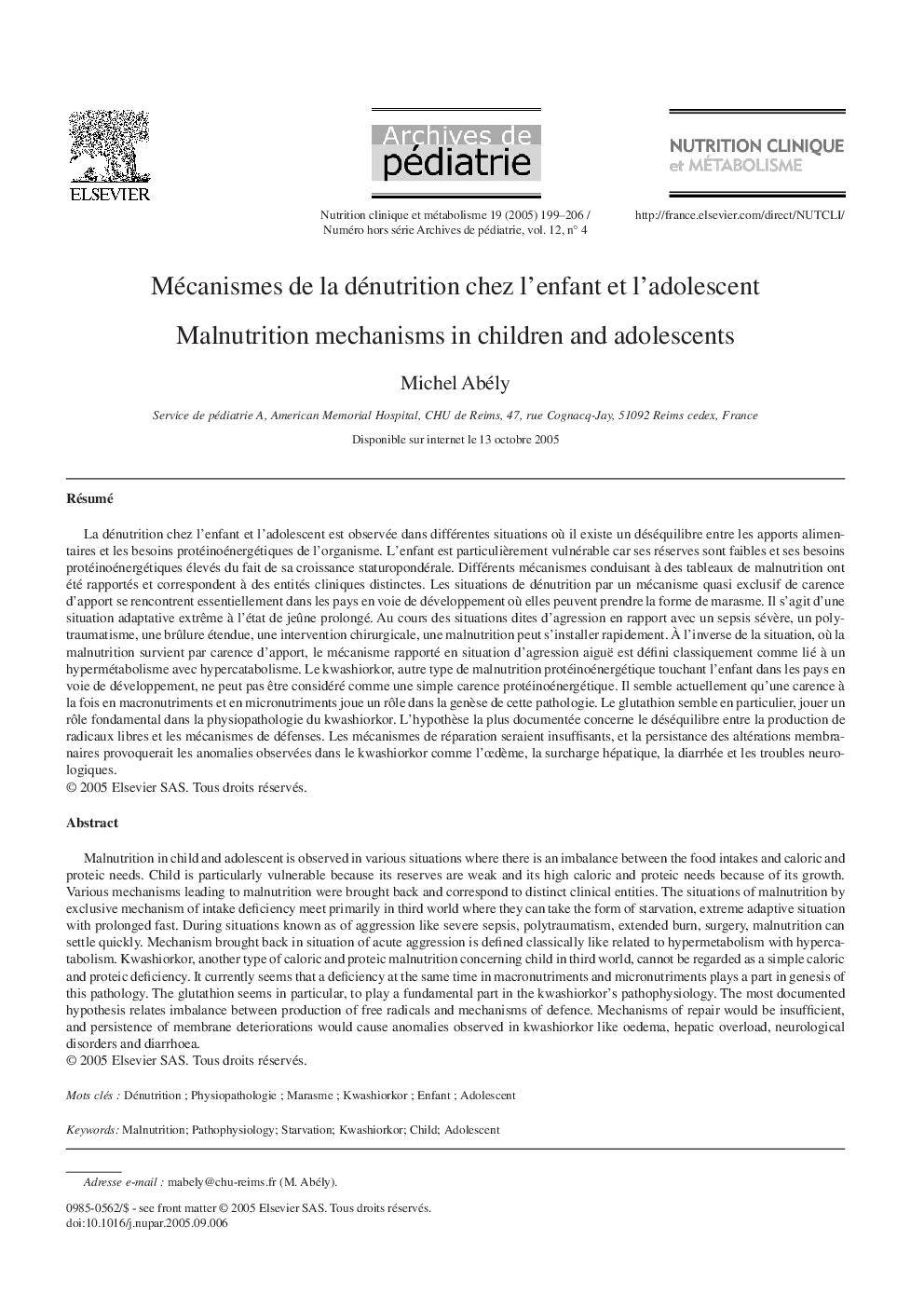| Article ID | Journal | Published Year | Pages | File Type |
|---|---|---|---|---|
| 9074463 | Nutrition Clinique et Métabolisme | 2005 | 8 Pages |
Abstract
Malnutrition in child and adolescent is observed in various situations where there is an imbalance between the food intakes and caloric and proteic needs. Child is particularly vulnerable because its reserves are weak and its high caloric and proteic needs because of its growth. Various mechanisms leading to malnutrition were brought back and correspond to distinct clinical entities. The situations of malnutrition by exclusive mechanism of intake deficiency meet primarily in third world where they can take the form of starvation, extreme adaptive situation with prolonged fast. During situations known as of aggression like severe sepsis, polytraumatism, extended burn, surgery, malnutrition can settle quickly. Mechanism brought back in situation of acute aggression is defined classically like related to hypermetabolism with hypercatabolism. Kwashiorkor, another type of caloric and proteic malnutrition concerning child in third world, cannot be regarded as a simple caloric and proteic deficiency. It currently seems that a deficiency at the same time in macronutriments and micronutriments plays a part in genesis of this pathology. The glutathion seems in particular, to play a fundamental part in the kwashiorkor's pathophysiology. The most documented hypothesis relates imbalance between production of free radicals and mechanisms of defence. Mechanisms of repair would be insufficient, and persistence of membrane deteriorations would cause anomalies observed in kwashiorkor like oedema, hepatic overload, neurological disorders and diarrhoea.
Keywords
Related Topics
Health Sciences
Medicine and Dentistry
Gastroenterology
Authors
Michel Abély,
